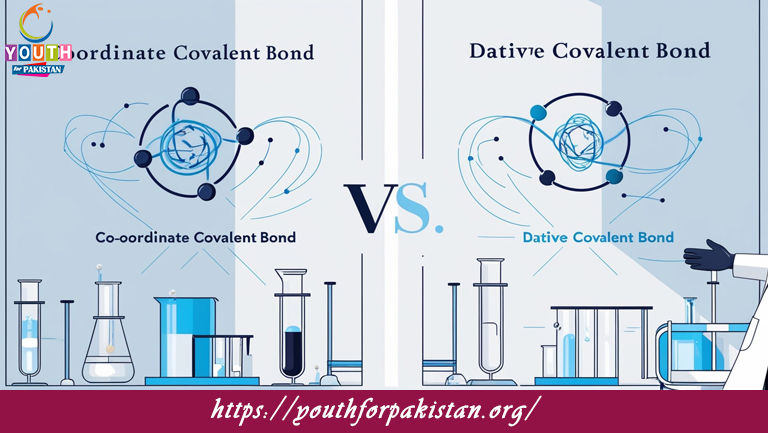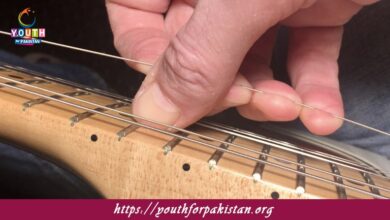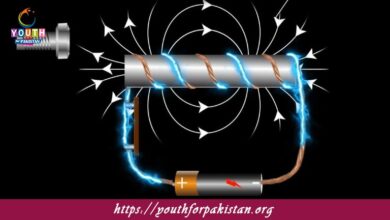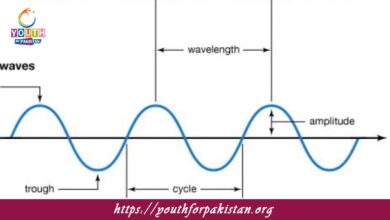Co-Ordinate Or Dative Covalent Bond MDCAT MCQs with Answers

Welcome to the Co-Ordinate Or Dative Covalent Bond MDCAT MCQs with Answers. In this post, we have shared Co-Ordinate Or Dative Covalent Bond Multiple Choice Questions and Answers for PMC MDCAT 2024. Each question in MDCAT Chemistry offers a chance to enhance your knowledge regarding Co-Ordinate Or Dative Covalent Bond MCQs in this MDCAT Online Test.
A co-ordinate covalent bond is formed when:
a) Both electrons in the bond are donated by one atom
b) Each atom donates one electron
c) Both atoms share their electrons equally
d) Electrons are transferred from one atom to another
Which of the following is an example of a molecule with a co-ordinate covalent bond?
a) H₂O
b) NH₃
c) CH₄
d) CO
In which of the following compounds is the nitrogen atom involved in a co-ordinate covalent bond?
a) NH₃
b) H₂O
c) NH₄⁺
d) CH₄
The molecule formed when ammonia reacts with boron trifluoride (BF₃) is:
a) NH₃BF₃
b) BF₃NH₃
c) NH₄BF₃
d) NH₃BF₃
In a co-ordinate covalent bond, the atom donating the lone pair of electrons is called the:
a) Acceptor
b) Donor
c) Reducer
d) Oxidizer
The bond formed between the oxygen atom in water and the hydrogen ion (H⁺) to form a hydronium ion (H₃O⁺) is:
a) Ionic bond
b) Sigma bond
c) Pi bond
d) Co-ordinate covalent bond
The number of co-ordinate covalent bonds present in the ammonium ion (NH₄⁺) is:
a) 1
b) 2
c) 3
d) 4
Which of the following molecules contains a co-ordinate covalent bond?
a) CH₄
b) Cl₂
c) H₂SO₄
d) H₂
The structure of the co-ordinate bond in a complex ion can be best described as:
a) A bond where both electrons come from one atom
b) A bond where electrons are shared equally
c) A bond formed by the transfer of electrons
d) A metallic bond
Which ion is formed by the donation of a lone pair of electrons from ammonia to a metal ion?
a) [NH₄]⁺
b) [NH₃]⁺
c) [NH₄]⁻
d) [NH₂]⁻
In the formation of the hydronium ion (H₃O⁺), the lone pair of electrons comes from:
a) The hydrogen ion
b) The oxygen atom in water
c) The hydrogen atom in water
d) The hydrogen molecule
The bond between the metal ion and ammonia in [Cu(NH₃)₄]²⁺ is:
a) Ionic bond
b) Sigma bond
c) Co-ordinate covalent bond
d) Pi bond
The Lewis structure of a molecule with a co-ordinate covalent bond will show:
a) A pair of electrons shared equally
b) A pair of electrons donated by one atom
c) Electrons transferred from one atom to another
d) A lone pair of electrons on each atom
In the co-ordinate covalent bond formation, which of the following acts as the electron pair donor?
a) Metal ion
b) Non-metal ion
c) Both atoms equally
d) Both atoms equally
In the complex ion [Fe(CN)₆]⁴⁻, the type of bonding between Fe and CN⁻ is:
a) Ionic
b) Covalent
c) Co-ordinate covalent
d) Metallic
Which of the following bonds is not a co-ordinate covalent bond?
a) The bond in H₃O⁺
b) The bond in [NH₄]⁺
c) The bond in CO₂
d) The bond in [Fe(CN)₆]⁴⁻
The bond in which the donor atom provides both electrons for bonding is known as:
a) A regular covalent bond
b) A metallic bond
c) A co-ordinate covalent bond
d) An ionic bond
The formation of a co-ordinate covalent bond between NH₃ and BF₃ results in:
a) NH₃BF₃
b) NH₄⁺BF₃
c) NH₃BF₃
d) NH₄BF₃
The molecule that contains co-ordinate covalent bonds between nitrogen and hydrogen is:
a) H₂O
b) NH₃
c) CH₄
d) HF
In the complex ion [Zn(NH₃)₄]²⁺, the bonding between Zn²⁺ and NH₃ is:
a) Ionic
b) Covalent
c) Co-ordinate covalent
d) Hydrogen bonding
The bond in [AlF₄]⁻ is an example of:
a) A metallic bond
b) A co-ordinate covalent bond
c) A polar covalent bond
d) An ionic bond
In which of the following molecules does a co-ordinate covalent bond form?
a) CO
b) H₂O
c) N₂
d) O₂
In the formation of the [Cu(NH₃)₄]²⁺ complex, the bonding involves:
a) Simple covalent bonds
b) Co-ordinate covalent bonds
c) Ionic bonds
d) Metallic bonds
The co-ordinate covalent bond in the hydronium ion (H₃O⁺) is formed between:
a) Two hydrogen atoms
b) A hydrogen ion and a water molecule
c) Two oxygen atoms
d) An oxygen atom and a hydrogen atom
Which of the following ions is stabilized by a co-ordinate covalent bond?
a) SO₄²⁻
b) CO₃²⁻
c) NH₄⁺
d) Cl⁻
The formation of the [NH₄]⁺ ion involves the donation of a lone pair of electrons by:
a) A hydrogen atom
b) An oxygen atom
c) A nitrogen atom
d) A chlorine atom
The bond in which one atom provides both electrons for bonding is a:
a) Polar covalent bond
b) Non-polar covalent bond
c) Co-ordinate covalent bond
d) Ionic bond
In the formation of the [Zn(NH₃)₄]²⁺ complex, which atom provides the lone pair of electrons?
a) Zinc
b) Ammonia
c) Water
d) Chlorine
The compound that contains a co-ordinate covalent bond is:
a) CH₄
b) H₂
c) HCl
d) [Co(NH₃)₄]²⁺
The Lewis structure of a molecule with a co-ordinate covalent bond shows:
a) Only shared pairs of electrons
b) Only transferred pairs of electrons
c) A pair of electrons coming from one atom
d) All electrons equally shared
In which of the following does the oxygen atom donate a lone pair of electrons to form a bond?
a) Water
b) Carbon monoxide
c) Hydrogen chloride
d) Methane
The co-ordinate covalent bond in [Fe(CN)₆]⁴⁻ involves:
a) Bonding between carbon and nitrogen atoms
b) Bonding between iron and cyanide ions
c) Bonding between iron and chloride ions
d) Bonding between cyanide ions and chloride ions
In the formation of [NH₄]⁺, the nitrogen atom donates:
a) A lone pair of electrons
b) Two pairs of electrons
c) One pair of electrons
d) No electrons
The complex ion [Cu(NH₃)₄]²⁺ involves co-ordinate covalent bonding between:
a) Copper and ammonia
b) Copper and chloride
c) Ammonia and water
d) Ammonia and oxygen
The co-ordinate covalent bond in the [SO₄]²⁻ ion is:
a) Formed by the donation of a lone pair of electrons by sulfur
b) Formed by the donation of a lone pair of electrons by oxygen
c) Formed by the transfer of electrons
d) Formed by sharing of electrons equally
Which of the following is a characteristic of co-ordinate covalent bonds?
a) Bonding pair of electrons are equally shared
b) Both electrons in the bond are from the same atom
c) Electrons are transferred between two atoms
d) The bond involves only one atom’s electrons
The complex ion [Ag(NH₃)₂]⁺ involves which type of bonding?
a) Covalent
b) Ionic
c) Co-ordinate covalent
d) Metallic
In the [BF₄]⁻ ion, the boron atom forms co-ordinate covalent bonds with:
a) Hydrogen
b) Fluorine
c) Oxygen
d) Nitrogen
The bonding in the complex ion [MnO₄]⁻ is characterized by:
a) Simple covalent bonds
b) Co-ordinate covalent bonds
c) Ionic bonds
d) Metallic bonds
The molecule in which the central atom forms a co-ordinate covalent bond with all its surrounding atoms is:
a) CO₂
b) H₂O
c) NH₃
d) SO₂
If you are interested to enhance your knowledge regarding Physics, Chemistry, Computer, and Biology please click on the link of each category, you will be redirected to dedicated website for each category.





